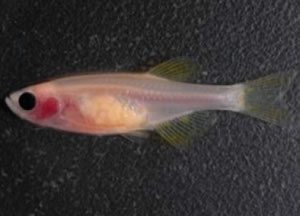Whether you’re doing a quick Miniprep or labeling hundreds of PCR tubes, listening to science podcasts can help keep you sane, entertained, and informed! With so many podcasts out there, we’ve pulled together this list of twelve great options:
1. 60-Second Science (1 – 2 minutes, updated weekdays)
This Scientific American podcast offers quick news about cutting-edge science, from potential causes of cat epilepsy to genes activated in songbirds and musicians. With frequent updates and high production value, this podcast will keep you entertained during quickie incubations.
2. Gastropod (25 – 55 minutes, biweekly)
Produced by two science and food journalists, Gastropod focuses on the food history and science, from the chemistry of fake grape flavor to the human microbiome. Recommended episodes: “DNA Detectives” and “The Microbe Revolution.”
3. Gut (10 – 15 minutes, bimonthly)
This podcast features quick but thorough interviews with the authors of recent BMJ Gut articles. It’s not for the faint of heart, thanks to its highly technical content and focus on the gut (and everything that comes out of it!).
Enjoying this article? Get hard-won lab wisdom like this delivered to your inbox 3x a week.

Join over 65,000 fellow researchers saving time, reducing stress, and seeing their experiments succeed. Unsubscribe anytime.
Next issue goes out tomorrow; don’t miss it.
4. ImmunoCasts (5 – 7 minutes, monthly)
Produced by The Journal of Immunology, ImmunoCasts feature very technical interviews with authors of the journal’s “Pillars of Immunology” series, which provides historical perspectives on important immunology developments (e.g., early uses of flow cytometry).
5. Nature Podcast (25 – 30 minutes, weekly)
One of the best journal podcasts out there, Nature Podcast provides the context and story behind Nature publications through nicely-edited interviews. As a bonus, the podcast produces short audio sci-fi under Nature Extra: Futures.
6. PNAS Science Sessions (4 – 6 minutes, monthly)
Much like PNAS itself, these short interviews with PNAS authors cover a huge variety of science! Although nominally geared towards popular audiences, the interviews can get fairly technical. Recommended episode: “An overdependence on p-values.”
7. Quirks & Quarks (50 – 55 minutes, weekly)
Produced by CBC Radio and hosted by a fantastic science journalist, Quirks & Quarks focuses on the people and story behind new scientific discoveries, from dinosaur cannibalism to cancer in ancient humans. Recommended episodes: All of them. Seriously.
8. Science Friday (two 47-minute segments, weekly)
This is the podcast version of the fantastic PRI show, which features interviews with scientists, science writers, and policymakers, who then answer questions from callers.
9. Science Podcast (20 – 30 minutes, weekly)
Produced by Science, this podcast summarizes science news stories with similar technical depth to Science’s News section, and often features a longer interview with the author of a Science paper.
10–12. MicrobeWorld’s This Week in Microbiology, This Week in Parasitism, This Week in Virology (1 – 2 hours, weekly to biweekly)
Hosted by several enthusiastic professors, these podcasts focus on the microbes that plague (and sometimes help) humans, animals, and plants. The podcasts are part of the American Society for Microbiology’s outreach initiative, MicrobeWorld. Recommended episodes: “Ebola lite” (Virology), “For whom the trich tolls” (Parasitism), and “It came from the Siberian permafrost” (Microbiology).
Hopefully this list can help you enjoy and learn more about science! To get other recommendations, check out our first article on science podcasts. To make recommendations, please comment below!








